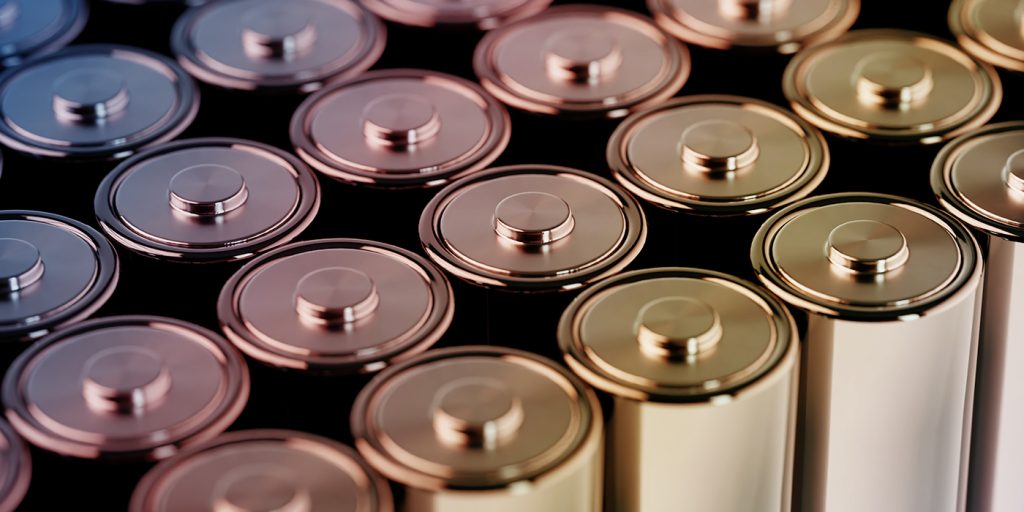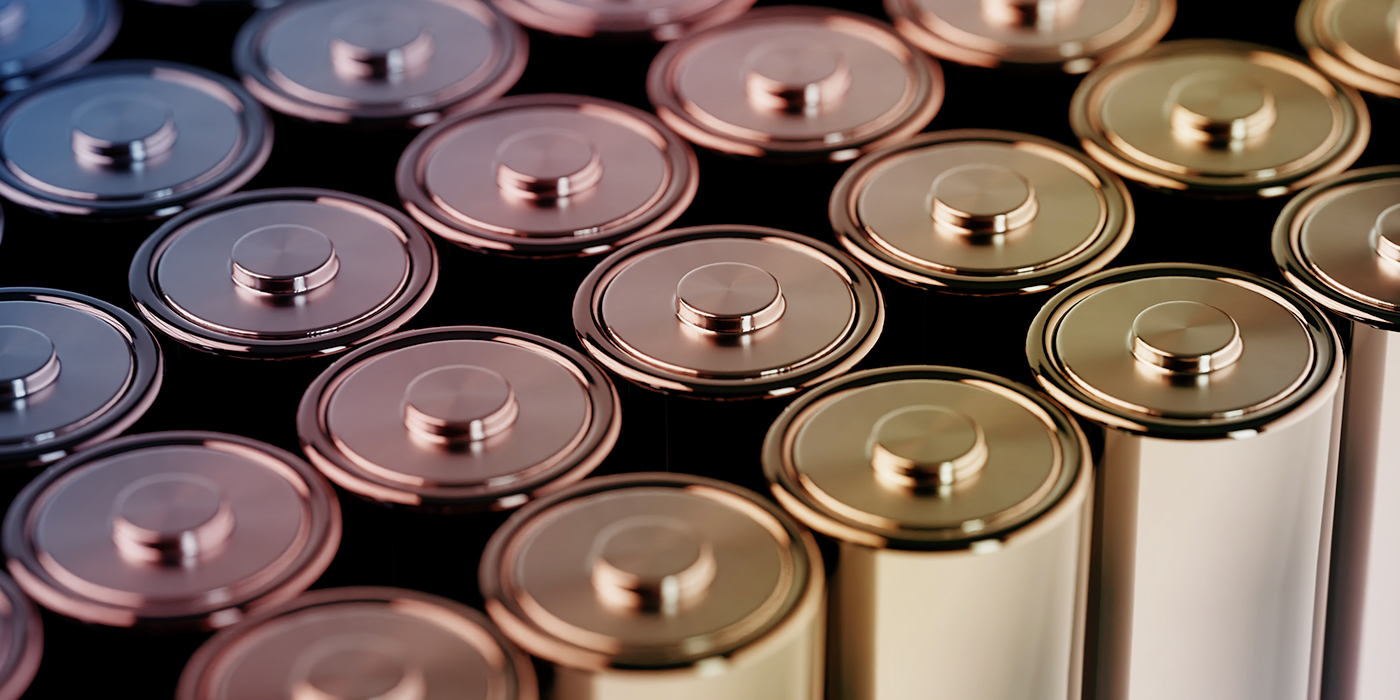
Polymer-based resins, such as epoxy, polyurethane, and silicone, are commonly used for sealing and potting applications in batteries. By filling voids within a battery enclosure, these materials help to promote heat dissipation and electrical insulation while offering protection against mechanical stress, chemical exposure, and moisture.1
Although resins are valued for these properties, they can exhibit inherent limitations when used alone.2 For this reason, achieving optimal performance in potting adhesives has been a significant challenge over the past decade. This includes meeting requirements like low dielectric loss, enhanced shock resistance, high thermal conductivity, and stable weight.3
Enter composite materials: By integrating glass components—such as glass fibers, and hollow or solid glass microspheres, —it is possible to create a composite material with superior thermomechanical, structural, and electrical performance.4
Glass Fibers: Reinforcing Strength and Sustainability
Glass fibers are made from extremely fine strands of non-crystalline glass. They are highly valued for their excellent surface-area-to-weight ratio, and the amorphous nature of glass ensures that its properties remain consistent throughout the fiber.4,5 When mixed with epoxy, these composites are widely utilized in structural applications and valued for their outstanding mechanical properties –6
In battery applications, these attributes bolster the composite’s capacity to endure mechanical shocks and vibrations, thereby improving overall durability and reliability. Additionally, the option to use recycled glass fibers contributes to sustainability by reducing waste, aligning with the industry’s push toward circular economy practices.4
Hollow and Solid Glass Microspheres: Lightweight Innovation with Multifunctional Benefits
Hollow glass microspheres, also known as microballoons, are thin-walled glass bubbles containing a void in the center. The balloon sizes generally range from 10 to 90 microns, and they have low density, high crush strength, and chemical durability. Their shape and smooth surface minimize stress concentrations at the interface between the fillers and the matrix, enhancing structural integrity. When used in resins, they create polymer composites with augmented thermal and sound insulation, reduced weight, and improved fracture toughness, making them ideal for advanced applications.7,8
Solid glass microspheres are spherical particles made from glass, These particulates are valued as fillers in polymer composites due to their unique properties, including customized thermal conductivity, isotropy, smooth spherical surfaces, and minimal stress concentration at the filler-matrix interface. Their uniform shape guarantees consistent shrinkage and enhances the processability of filled materials, while also minimizing orientation effects during molding.11,12
In battery potting applications, engineered solid glass microspheres can boost insulation performance, increase thermal conductivity, and ensure dependable material properties, making them particularly suitable for protecting sensitive components.
Silane Coatings: Seamlessly Bonding Glass and Polymer for Superior Composites
Silanization is a surface modification technique used to increase the interfacial adhesion between glass particulates, such as microspheres and fibers, and polymer resins in composite materials. By applying silane coupling agents, a strong chemical bond is formed between the glass and the polymer, significantly improving the mechanical properties, loading capabilities, and surface adhesion of the composite.13
Silanization has also been shown to protect glass fibers from mechanical damage during processing and environmental degradation, making it particularly beneficial for battery potting applications.4
Tailored Glass Solutions from MO SCI
By integrating glass materials into polymer resins, researchers can create composites that meet the stringent demands of modern battery technology and contribute to greater sustainability and safety.
MO SCI’s expertise in producing high-performance glass fibers and microspheres, coupled with advanced silane coating technologies, ensures that customers have access to tailored solutions for optimizing battery potting and sealing materials.14,15
Contact us today to discuss your material performance requirements.
References and Further Reading
- Epec. [Online] Battery Potting & Encapsulation. Available at: https://www.epectec.com/batteries/potting-and-encapsulation.html (Accessed on 21 November 2024).
- Yang, L., et al. (2024). Characterization of Potting Epoxy Resins Performance Parameters Based on a Viscoelastic Constitutive Model. doi.org/10.3390/polym16070930
- Hu, J.B. (2020). High-performance ceramic/epoxy composite adhesives enabled by rational ceramic bandgaps. Scientific Reports. doi.org/10.1038/s41598-019-57074-7
- Săftoiu, G-V., et al. (2024). Glass Fibre-Reinforced Composite Materials Used in the Aeronautical Transport Sector: A Critical Circular Economy Point of View. Sustainability. doi.org/10.3390/su16114632
- Park, S-J., et al. (2011). Chapter 6 – Element and Processing. Interface Science and Technology. doi.org/10.1016/B978-0-12-375049-5.00006-2
- Safi, S., et al. (2016). Evaluation of interfacial properties of the silane blend sized glass fiber–epoxy composite by the microdroplet test. Journal of Composite Materials. doi.org/10.1177/0021998316661620
- Liang, J-Z., et al. (2014). Estimation of thermal conductivity for polypropylene/hollow glass bead composites. Composites Part B: Engineering. doi.org/10.1016/j.compositesb.2013.08.072
- Wouterson, E.M., et al. (2004). Fracture and Impact Toughness of Syntactic Foam*. Journal of Cellular Plastics. doi.org10.1177/0021955×04041960
- Mo Sci. [Online] Porous Silica. Available at: https://mo-sci.com/products/porous-silica/ (Accessed on 21 November 2024).
- Li, M., et al. (2024). Preparation of DOPO-KH550 modified hollow glass microspheres/PVA composite aerogel for thermal insulation and flame retardancy. Journal of Colloid and Interface Science. doi.org/10.1016/j.jcis.2023.10.073
- Mallick, P.K. (2000). 2.09 – Particulate and Short Fiber Reinforced Polymer Composites. Comprehensive Composite Materials. doi.org/10.1016/B0-08-042993-9/00085-1
- Mishra, D., et al. (2016). An experimental investigation on the effect of particle size on the thermal properties and void content of Solid Glass Microsphere filled epoxy Composites. IOP Conf. Series: Materials Science and Engineering. doi.org/10.1088/1757-899X/115/1/012011
- Perdum, A-I., et al. (2022). HOLLOW GLASS MICROSPHERES TREATED WITH SILANE COUPLING AGENT. University Politehnica of Bucharest Scientific Bulletin, Series B. ISSN 1454-2331.
- Mo Sci. [Online] Glass Microspheres. Available at: https://mo-sci.com/products/glass-microspheres/ (Accessed on 21 November 2024).
- Mo Sci. [Online] Custom Development Services. Available at: https://mo-sci.com/services/custom-development-services/ (Accessed on 21 November 2024).

